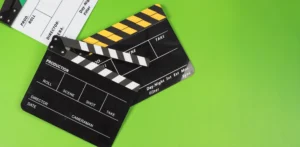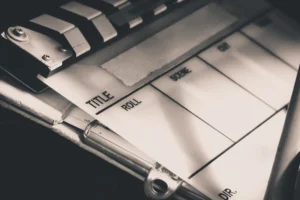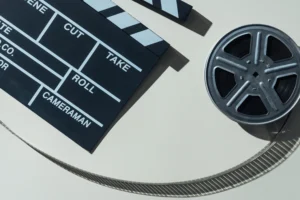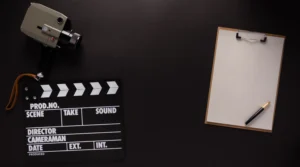
Fonts play a crucial role in visual storytelling, especially in films. Whether it’s the opening credits, the title sequence, or promotional material like movie posters, the choice of typography helps establish tone, genre, and mood. From iconic font designs that became synonymous with blockbuster hits to the subtle typography used in indie films, fonts help create memorable cinematic experiences.
This article will explore how fonts are used in movies, their impact on branding and marketing, and their role in shaping audience perception. We will also look at famous fonts used in film history, providing examples and insights into their influence on both viewers and designers alike.

Typography in movies is not just about readability—it’s about creating an emotional and psychological connection with the audience. Fonts are carefully chosen to align with the movie’s theme and genre, often serving as visual cues that inform the viewer about what to expect. For instance, bold and aggressive fonts are frequently used in action or thriller films, while more delicate and elegant fonts are preferred in romantic or drama genres.

Fonts can immediately signal the genre of a movie to the audience. Here are a few ways fonts serve as visual cues:

The movie title sequence is a crucial moment for setting the tone of the entire film. Fonts play an integral role in making this first impression. In some cases, the font choice becomes as iconic as the movie itself, becoming a part of its visual identity.
For example, the typography in “Star Wars” has become legendary. The crawl text font used in the opening sequence is instantly recognizable, signaling to viewers that they are about to embark on an epic space adventure. Another notable example is the bold, capitalized font used in “Pulp Fiction,” which adds to the film’s retro vibe.
Throughout the history of cinema, certain fonts have transcended their original purpose, becoming iconic symbols of the movies they represent. These fonts are often replicated in merchandise, posters, and fan art, further embedding themselves in popular culture.
One of the most iconic uses of typography in film is the opening crawl of the “Star Wars” franchise. The font, which closely resembles “News Gothic,” sets the tone for the epic space saga. It has become one of the most imitated typographic styles in cinema.
The typeface used in the “Jurassic Park” logo, ITC Stone Serif, has come to be associated with adventure and dinosaurs. The font perfectly complements the bold, thrilling visuals of the film and is instantly recognizable to fans.
The serif typeface used in “The Godfather” poster and title sequence has a timeless and authoritative look, reflecting the film’s themes of power, tradition, and family. Its Old English style font evokes the Mafia’s strong ties to tradition and loyalty.

Fonts not only play a crucial role within the movie itself, but they are also central to the marketing of films. Posters, trailers, and promotional materials heavily rely on typography to capture audience attention and create lasting impressions.
Movie posters are one of the primary marketing tools used to promote a film, and fonts play a central role in their design. The typography must align with the visual elements and themes of the movie while standing out to capture potential viewers’ interest.
Consider the “Avengers” series, where the bold, metallic font used in the movie posters immediately communicates a sense of action and heroism. This font has now become a staple for superhero films, influencing the design choices of subsequent movies in the genre.
The fonts used in movie marketing often play on the psychology of typography to create a specific emotional response. For example:
Movie credits are typically more subtle than the fonts used in promotional material, but they still play a vital role in maintaining the film’s overall tone and style. The choice of font for end credits can either complement or detract from the viewer’s experience.
For instance, many films choose to use simple and readable fonts like Helvetica or Arial for their end credits to ensure clarity, especially when there are large numbers of cast and crew members listed. However, some directors choose to use stylized fonts in keeping with the aesthetic of the film, as seen in the animated credits of “Guardians of the Galaxy.”

As technology advances, the possibilities for creative typography in film continue to expand. Digital tools and software now allow designers to experiment with animated fonts, 3D typography, and immersive text effects that engage audiences like never before.
One emerging trend is the use of variable fonts, which enable the manipulation of font weight, width, and other attributes in real-time. This level of customization can help create highly dynamic and interactive title sequences and promotional materials, giving filmmakers new ways to express their creative vision through typography.
In the world of cinema, fonts are more than just a medium for displaying text—they are a powerful tool for storytelling, branding, and emotional engagement. From the iconic crawl text of “Star Wars” to the bold fonts used in action films, typography plays an essential role in shaping how audiences perceive and connect with movies.
Understanding the impact of fonts on movie marketing, title sequences, and credits can enhance the overall cinematic experience and ensure that a film’s visual identity leaves a lasting impression. As technology continues to evolve, we can expect to see even more innovative uses of typography in future films.
Whether you’re a filmmaker, designer, or movie lover, paying attention to the fonts used in films can offer valuable insights into how visual elements shape the narratives we cherish.